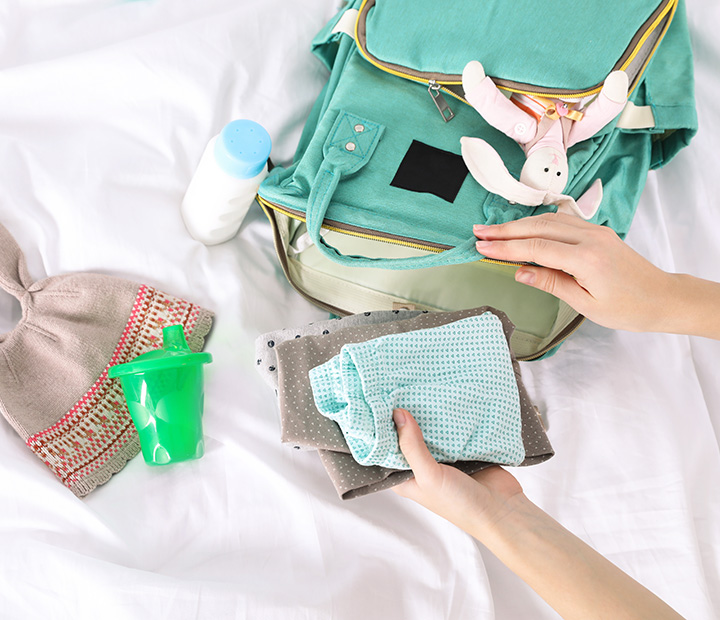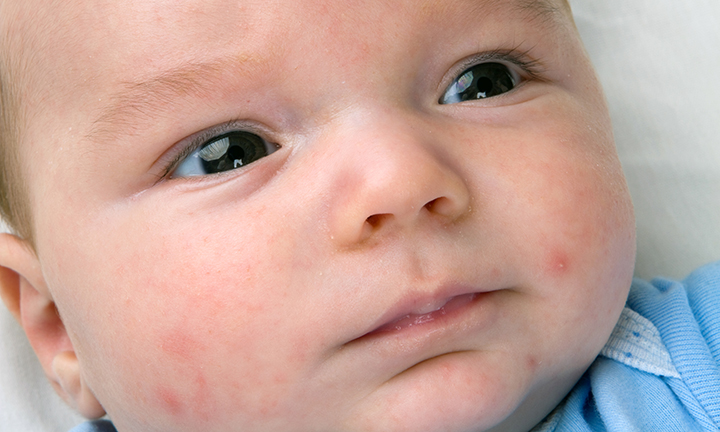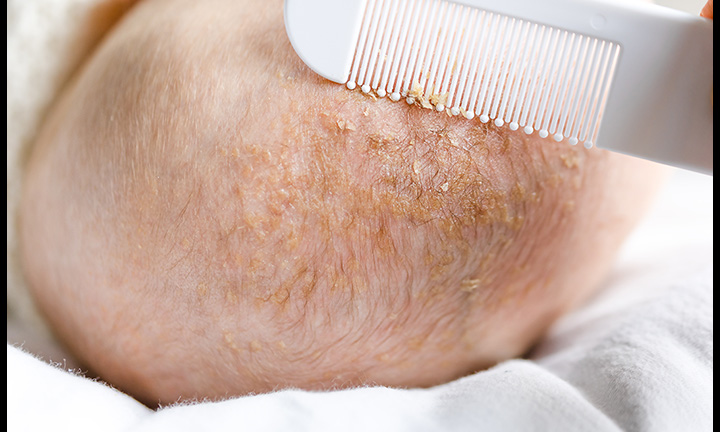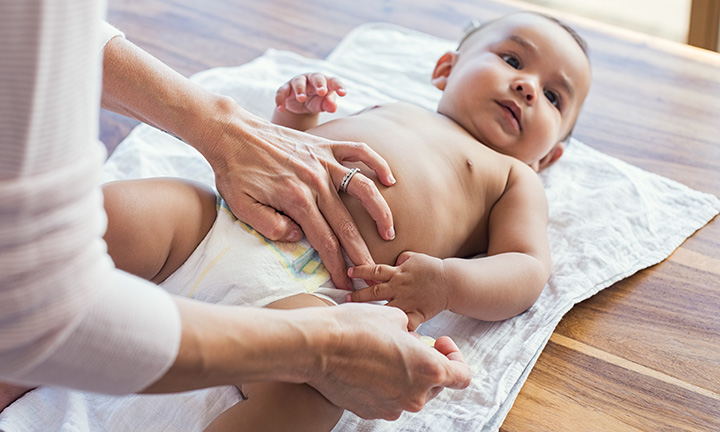
Yeast Nappy Rash: Symptoms, Causes and Treatment
Yeast nappy rash, sometimes called fungal nappy rash or thrush, is a common type of skin irritation in babies caused by an overgrowth of the yeast Candida albicans. It typically develops when the skin remains damp from urine or stool, creating an ideal environment for yeast to thrive. Unlike regular nappy rash, yeast nappy rash often appears as a bright red, inflamed area with defined edges. It may include small, red spots (satellite lesions) surrounding the main rash, particularly in skin folds.
Key signs and treatments include:
If the rash persists for more than a few days or worsens, please consult your child's GP. In the following sections, we’ll explore how to identify yeast nappy rash, effective treatments and practical prevention tips.
What is a Yeast Nappy Rash?
A yeast nappy rash occurs when an overgrowth of a common fungus called candida takes place in your little one's nappy area. This rash forms because the warm, damp environment of a nappy provides an ideal breeding ground for yeast. Unlike typical nappy rashes, this one appears as red patches with slightly raised edges or small red bumps that can be more difficult to clear. Though it can be uncomfortable for your baby, identifying a yeast rash early can make treatment easier and more effective.
Nappy Rash vs Yeast Infection
Understanding the difference between a nappy rash and a yeast infection is key to finding the proper treatment for your baby. A regular nappy rash is usually caused by irritation from moisture, friction or sensitivity to certain products. This type of rash is typically pink or red and may often be managed with frequent nappy changes and gentle care.
A yeast nappy rash occurs due to an overgrowth of the fungus Candida. This rash is more severe, showing bright red patches with raised edges or small bumps, often found in skin folds. Unlike a regular nappy rash, a yeast rash doesn't respond to standard nappy rash cream and may persist or worsen without proper treatment.
To tell the difference between a nappy rash and a yeast rash, look for a more vivid red colour, defined borders and clusters of red spots. If you suspect a yeast infection, it’s crucial to consult your child's GP for the right treatment.
Recognising the signs of a yeast nappy rash early can help you provide the right care and bring relief to your baby.
What Causes Yeast Nappy Rash?
The primary cause is due to candida overgrowth, which thrives in warm, moist environments like a baby's nappy area. While this fungus naturally exists on our skin, certain conditions may lead to it multiplying and causing an infection. One common trigger is leaving a wet or soiled nappy on for too long, which allows moisture to accumulate and can result in a fungal nappy rash.
While this fungus naturally exists on our skin, certain conditions can lead to its multiplication and cause an infection.
One of the most common triggers is leaving a wet or soiled nappy on for too long, allowing moisture to build up, which can lead to fungal nappy rash.
Moreover, babies on antibiotics, or those whose breastfeeding parent is on antibiotics, are more susceptible to yeast rashes. These medications can upset the natural balance of bacteria and yeast in the body, potentially causing a yeast nappy rash.
Other contributing indications include increased amounts of stool and a lack of cleansing and dryness, which can trap moisture and cause friction, allowing yeast to flourish.
Yeast Nappy Rash Treatment
When dealing with a yeast nappy rash, it’s important to take a targeted approach that addresses the fungal infection and soothes your baby’s skin. Yeast nappy rash treatment strategies include keeping the area dry, frequent nappy changes, and using antifungal creams recommended by your little one’s GP. Let’s break down these options so you know what to expect:
For more severe or persistent cases, specific creams may be necessary, which brings us to the next section.
Yeast Nappy Rash Cream
If your baby’s nappy rash is more severe or caused by a yeast infection, it’s important to consult your baby’s GP before choosing a treatment. They may offer advice on which products are most suitable for your baby’s needs. The following are commonly recommended types of yeast nappy rash cream:
Remember, it’s always best to consult your little one's GP before using any of the above creams for a yeast nappy rash. They can help recommend the right products based on your baby’s needs.
FAQS AT A GLANCE
After beginning antifungal treatment, you may notice an improvement in symptoms within three days. However, it can take two to three weeks for the yeast nappy rash to completely clear up. It's important to follow your child's GP's treatment plan from start to finish to prevent the rash from returning, even if the symptoms seem to fade sooner.
The Bottom Line
Yeast nappy rash can be quite uncomfortable for your little one, but with the right care, it’s manageable. By understanding the difference between a yeast nappy rash and a regular nappy rash, and recognising the signs early, you can choose the right treatment. Changing nappies frequently, keeping the area clean and dry and using barrier creams can help prevent future outbreaks. If standard treatments aren’t effective, consult your baby’s GP.
To save on baby essentials, download the Pampers Club app for exclusive digital offers.
How We Wrote This Article The information in this article is based on expert advice found in trusted medical and government sources, such as the National Health Service (NHS). You can find a full list of sources used for this article below. The content on this page should not replace professional medical advice. Always consult medical professionals for full diagnosis and treatment.












